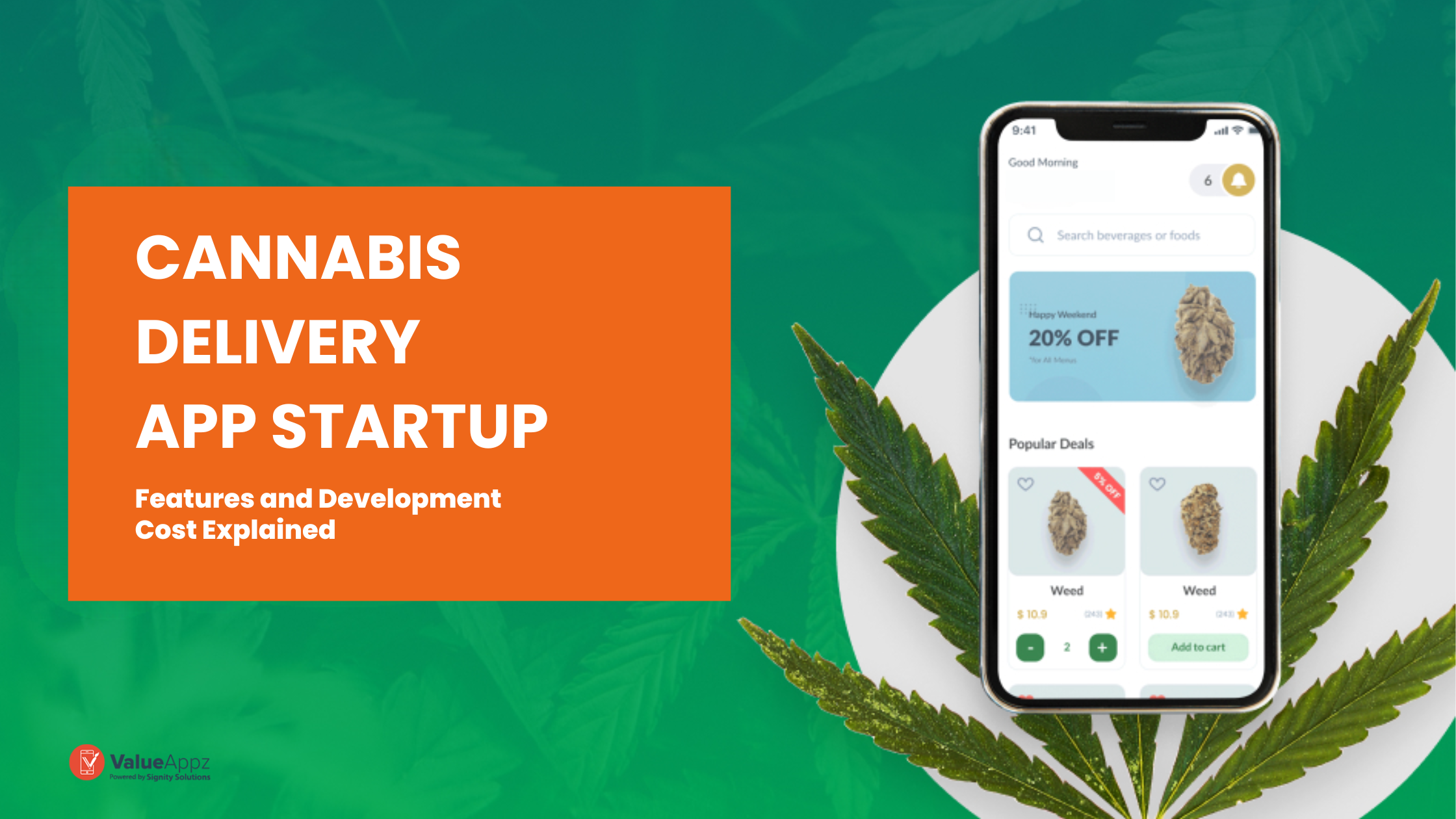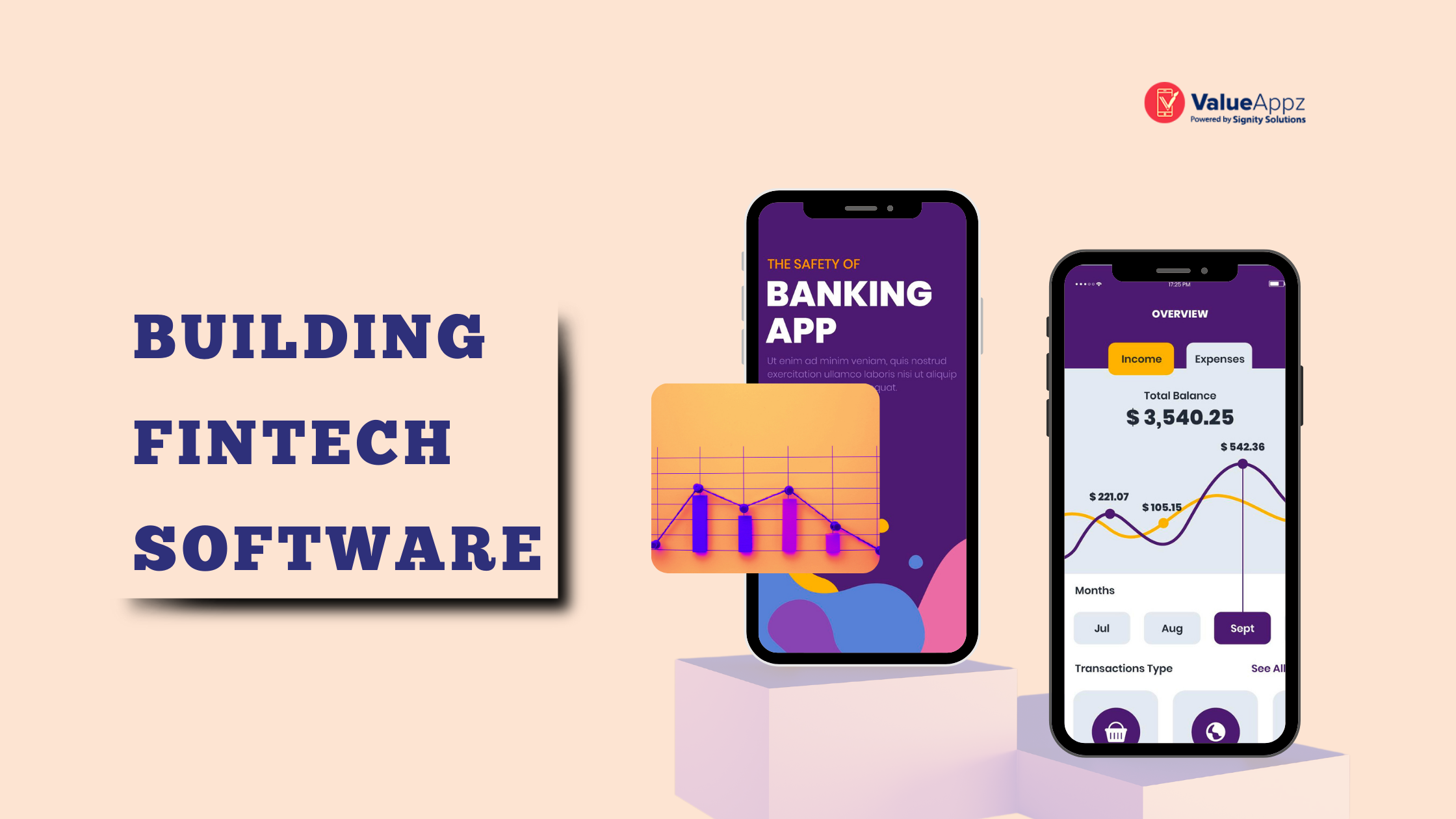The Lean Startup Approach: How MVPs Can Save Your Time & Money
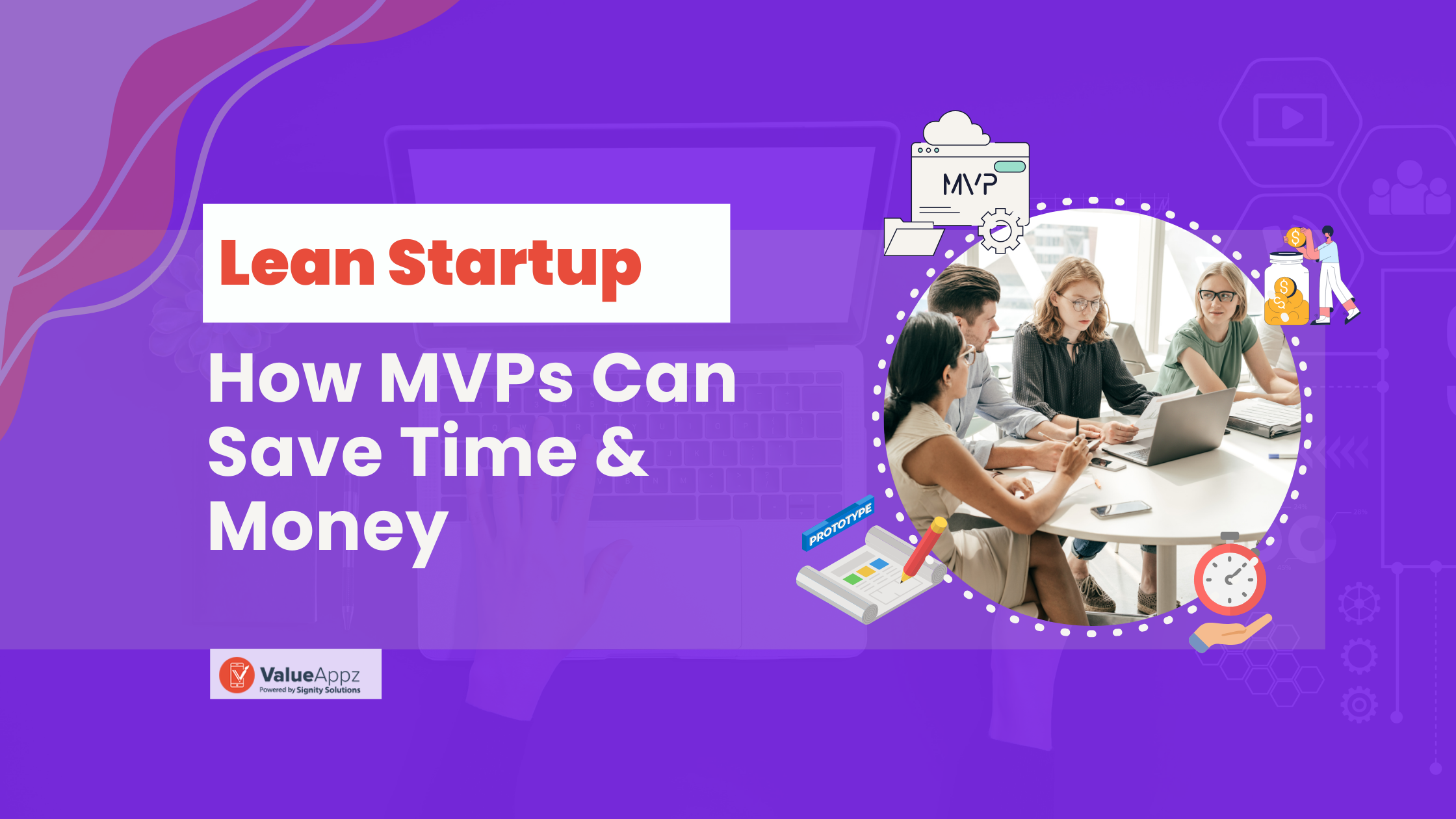
Summary: Creating a Minimum Viable Product is an essential step for businesses to ensure product and service success. Discover how MVP can help you grow your sales and customers and the tips for MVP for startups.
Are you planning to launch a product or service in the market? Wait. Are you sure that your target audience will accept your product, or will it provide all the needed solutions?
Did you know that about 90% of startups fail? Out of which, 42% of entrepreneurs believe that lack of market need for their product is the major cause. Because they couldn’t identify the right market, they had to shut down their business, which at the start must have looked like a perfect idea for their brand growth.
So, as a startup, how do you ensure that you do not fall into the trap? The answer is simple: MVP (Minimal Viable Product). Though this may look like a time-consuming process, trust us, it is the only right way to start your business.
With this blog, know how startups can save plenty of time and money with MVP. Before we begin discussing this, let us look at the concept of a Minimum Viable Product.
Table of Contents
What is a Minimal Viable Product?
A Minimal Viable Product (MVP) is the concept of product development with the minimum features to satisfy early customers and provide feedback for successful future development. The main aim of an MVP is to quickly test and validate the product idea with the least effort and resources. The entire process helps understand user needs, reduce development costs, and speed up time-to-market for the product.
One great example of this is when Apple launched its first iPhone in 2007. It released the phone with limited features and core functionalities like a touchscreen smartphone, making calls, browsing the internet, and playing music. This MVP allowed Apple to gain customer interest, gather valuable feedback, and improve subsequent models based on user experience.
Hence, before you launch your product, it is crucial to build an MVP. The section below explains all the benefits of creating a Minimum Viable Product.
Reasons Startups Should Consider Creating a Minimum Viable Product
Here are the top nine reasons why you should build an MVP for your startup and small business.
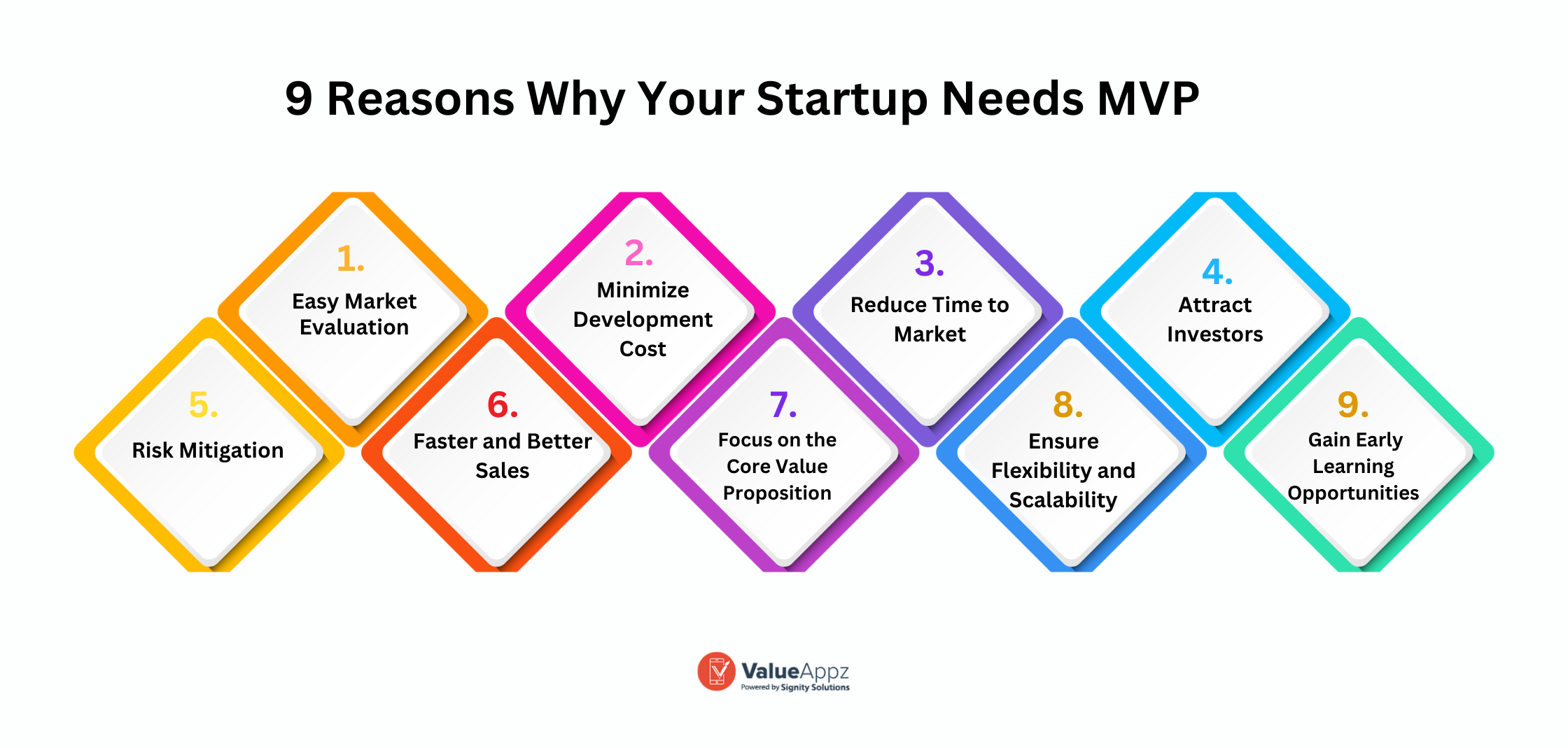
1. Validate the Market Demand
How do you approve your product’s market demand? One of the greatest MVP benefits is that it lets the businesses know beforehand whether the product is a perfect fit for the market.
By keeping track of how users engage with the MVP, including their usage patterns, feedback, and willingness to pay, startups and small businesses can assess whether there is a genuine demand for your product or service.
Don’t just guess. Know your product’s perfect fit in the market with our MVP development services.
2. Minimize Development Cost
By concentrating on the most important features, a Minimum Viable Product (MVP) lowers development costs by cutting down on the time and resources required for early development. Startups may avoid over-engineering or adding additional features, accelerate the development process, and better manage resources by giving priority to essential capabilities.
This lean startup approach for MVP optimizes resource allocation and lowers total development costs by enabling cost-effective iteration based on user feedback.
Get the right MVP solution for your budget. Connect with our professionals to know more.
3. Reduce Time to Market
By giving priority to the most important features for the initial release, an MVP shortens the time it takes for a business to launch a working version of its product or service. As this methodology focuses on vital features only, it for sure speeds up the development process.
It enables startups to obtain critical user input, iterate, and improve the product while it is already in the hands of potential consumers. With an agile strategy, businesses can bring a viable product to market much faster, giving a competitive advantage and enabling quick revisions based on real-world usage.
4. Attract Investors
Another advantage of creating a Minimum Viable Product is that it will showcase your startup’s capacity to provide a solution that addresses real needs or demands. An efficient MVP showcases real-world user interaction, feedback, and scaling possibilities for an attractive investment case.
Furthermore, the MVP’s iterative development process demonstrates the startup’s flexibility and responsiveness to client demands, indicating a high potential for expansion and return on investment.
5. Risk Mitigation
Even before you start investing heavily in your product, it is essential to assess the risks associated with it. Launching an MVP before the actual product helps in risk mitigation. It helps startups and small businesses to validate their product concept in the market with the least investment, hence reducing the risk of developing a product that the market may not accept.
The MVP process helps gather early feedback from the users that can then be used to mold the product and services as per the data collected. Hence, you can reduce startup risks with MVP and ensure that the target market accepts your product.
6. Faster and Better Sales
One of the major goals of startups and small businesses is to attract early sales. Following a lean startup approach for MVP can help your business achieve this goal. As mentioned above, MVP enables collecting early user feedback.
Once you have this in detail, you can incorporate iterative improvements based on how users feel about your product and services. This approach leads to stronger product-market fit, providing a compelling value proposition to accelerate sales and build stronger customer confidence.
7. Focus on the Core Value Proposition
A minimal viable product (MVP) highlights the key components that directly meet the target audience’s major demands, which helps to keep the emphasis on the MVP’s fundamental value proposition. Startups and small enterprises may make sure that the product’s unique value proposition is presented clearly and effectively, drawing in potential customers by giving priority to these essential components.
This lean methodology facilitates a development process that is laser-focused and centered on providing the core value proposition, laying the groundwork for long-term distinction and customer satisfaction.
8. Ensure Flexibility and Scalability
The environment in which your startup operates is dynamic and unpredictable, and the state of the market may shift quickly. In the face of uncertainty, you can maintain flexibility and adaptability by developing an MVP. You can swiftly evaluate market input and make required changes to the product or business model by launching an initial version of the product.
Startups that possess this agility are more equipped to adapt to shifting consumer demands, new trends, and competition demands, which guarantees long-term survival and prosperity.
9. Gain Early Learning Opportunities
As a startup, you can gain important insights early in the product development process by launching an MVP. With this lean methodology, you can also gain valuable information about user behavior, preferences, and their pain areas.
Early learning will facilitate rapid iteration, informed decision-making, and pivoting when needed. All of these will contribute to a more successful product launch that is easily accepted by the target market.
Check our guide on building a successful B2B marketplace. Discover types of business models and the steps for development.
5 Tips to Build an Effective Minimum Viable Product
Creating a Minimum Viable Product can be challenging. Follow the tip mentioned below for an easy and fast process.
1. Clearly Define Your Hypothesis
Outlining your hypothesis includes defining your goal in specifics and developing a rough plan of action to accomplish it. This stage is essential for directing the creation of your MVP as it establishes the framework for the features and functions that will be included. You can successfully determine the direction for your MVP implementation and make sure it corresponds with the recognized needs of your target audience by creating a clear issue statement and a hypothesis for your solution.
2. Conduct Low-Cost Experiments
Low-cost experimentation involves using low-cost methods to confirm hypotheses and obtain preliminary user input, such as surveys, landing pages, or mock-ups. With minimal financial outlay, you may effectively evaluate the feasibility of your MVP concept, learn about user preferences, and confirm the value proposition of your product by utilizing these techniques.
Want to build an on-demand delivery app? Check our blog and know the app development cost.
3. Prioritize Key Features
Setting a feature’s priority requires deciding which features are most important and giving them top priority. These features should directly address the main issue or requirement of your target audience. You can make sure that your MVP successfully adds value and appeals to your consumers by concentrating on these essential elements.
4. Gather Feedback Early and Often
In order to evaluate the value proposition of your MVP and obtain insight into potential users’ pain concerns, it is important to engage with them on a regular basis when gathering feedback early and often. You may iteratively improve your product to better match customer wants and preferences by actively soliciting and implementing user input throughout the development process.
5. Emphasize Speed and Agility
Prioritizing rapid development and iteration to test and improve your product concept quickly is necessary when putting a strong emphasis on speed and agility. Adopting an iterative strategy can help you quickly validate and improve your MVP by allowing you to receive feedback rapidly, make required improvements, and respond to changing market demands.
Here’s a quick preview of the tips to building an MVP and getting your first users as a pre-launch startup.
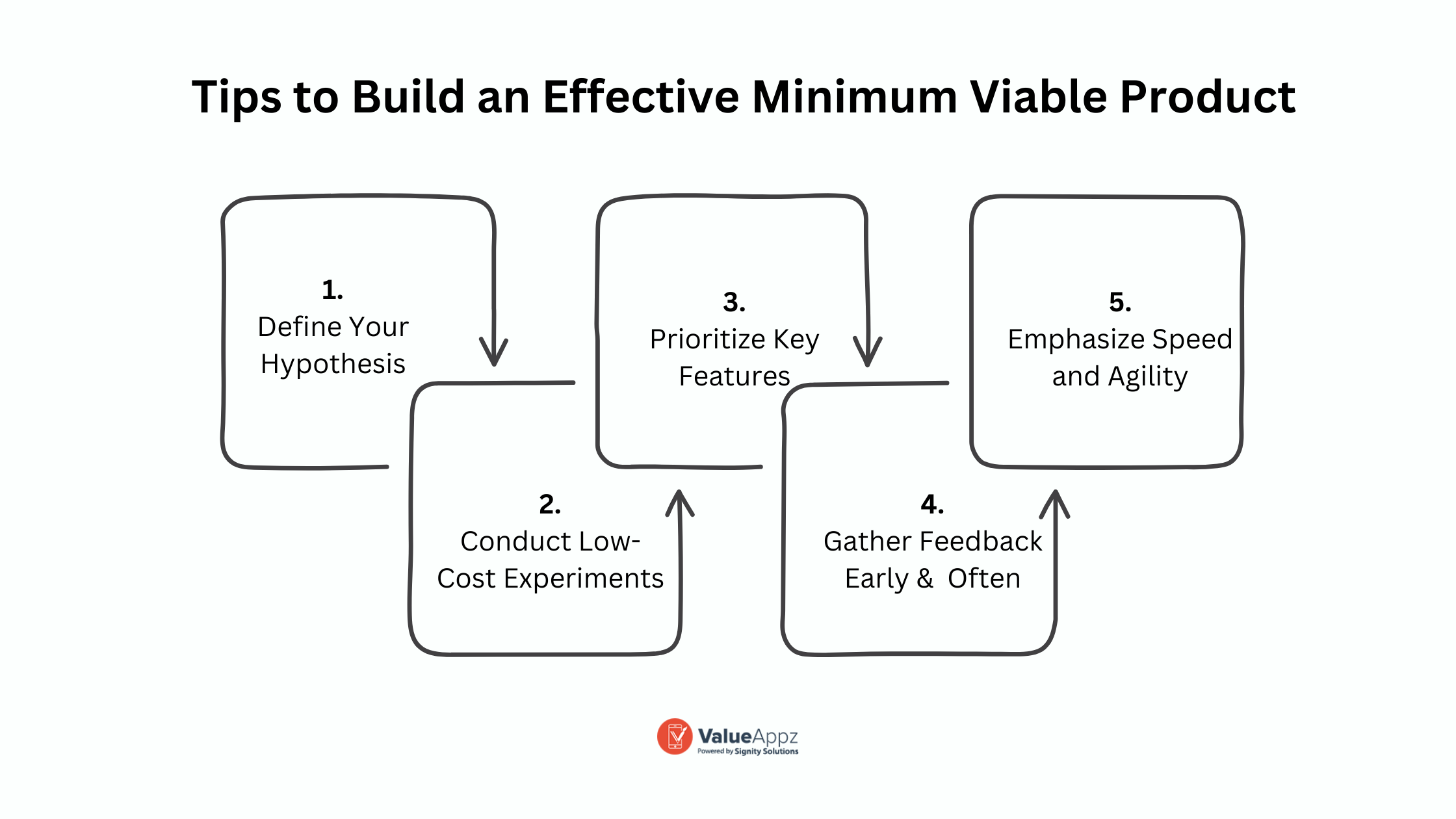
Launch a Successful Product With Our MVP Development Services
Building a Minimum Viable Product requires a dedicated team of professionals. ValueAppz is a leading MVP development company that has helped global companies turn their dreams into reality.
Our MVP development services will help you reduce startup risks, development costs, and time to market the product. Get in touch with us to start your entrepreneurial journey.
Key Takeaways
- By monitoring user interaction and input, MVPs assist entrepreneurs in early market demand validation, lowering the risk of creating products that fall short of expectations.
- Reducing development costs and time-to-market by concentrating on key features also optimize resource allocation and facilitates affordable iteration.
- MVPs demonstrate a startup’s capacity to expand and meet market demands, which attracts investors. Iterative processes show adaptability and response to client needs.
- By quickly and affordably verifying product concepts, the launch of an MVP reduces risk. Early feedback ensures a successful product launch and long-term profitability by facilitating quick iterations and well-informed decision-making.
Frequently Asked Questions
Q1. Can the lean startup approach be applied to any type of business or product?
Yes, the lean startup approach can be applied to any type of business or product to reduce risk, identify market opportunities, and engage early users.
Q2. What is an MVP, and how does it differ from a finished product?
Minimum Viable Product is the basic version of a product with essential features to satisfy early customers. On the other hand, a finished product is a fully-featured and polished version of the product.
Q3. What are the different types of MVPs?
Several types of MVPs include the Prototype, Concierge, Wizard of Oz, and Single-Feature MVPs.
Q4. How much time and money can I realistically save by using an MVP?
Time and money saved by using an MVP varies from product to product but can be substantial as it allows for testing and iteration before the final product launch.
Q5. How can I get started with the lean startup approach, even on a limited budget?
You can start by clearly defining your hypothesis, conducting low-cost experiments, and leveraging free or affordable resources for testing and feedback.
THE AUTHOR
Priya
With 5 years of marketing experience under my belt, I bring a data-driven approach to my writing, creating content that is informative and actionable. I'm passionate about helping businesses achieve their marketing goals. Let's chat about how to make your product or service more user-friendly.

Get ready to digitally transform your business.
Let our team help take your business to the next level. Contact us today to get started on finding the perfect solutions for your business needs.


